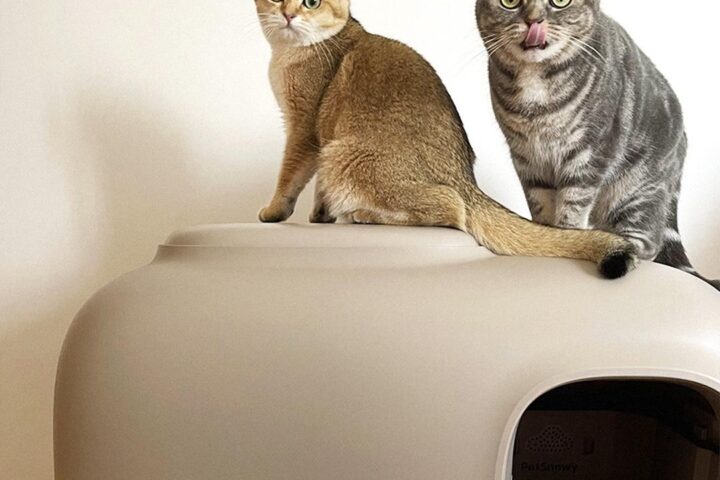As a pet owner, keeping your furry friend well-behaved is essential for their safety and your peace of mind. Effective training can be the key to achieving this goal. But knowing where to start or how to go about it can be challenging. With so many methods and techniques available, it’s easy to be unsure of which approach to take.
That’s why this article will explore the tried-and-true methods for effective dog training that can help you improve your pup’s behavior. Let’s dive in and explore how you can establish a strong and positive relationship with your dog through the right training methods.
1. Follow the Rules of Positive Reinforcement
The idea is to encourage your pup to repeat desirable behaviors by providing rewards, such as treats, praise, or playtime. This approach helps build a strong and positive relationship with your dog as they learn to associate good behavior with positive outcomes.

When using positive reinforcement, it’s necessary to be consistent and clear in your orders and expectations. Start with a simple command and gradually increase the difficulty level as your pup progresses. Be patient and use plenty of praise and treats to encourage good behavior.
It’s also crucial to avoid punishing your dog for undesirable behavior, as this can lead to fear and anxiety. Dogs also experience anxiety, as humans do. There are several strategies to counter anxiety in dogs, as reported by the American Kennel Club. One among them is counter-conditioning. Redirecting their behavior to something positive and rewarding them when they comply also helps manage anxiety.
Remember, positive reinforcement is a long-term approach to training that requires patience, consistency, and a lot of love.
2. Don’t Use Physical Punishment
Physical punishment, like hitting, is a harmful and ineffective method of dog training. Not only does it cause pain and distress to your pup, but it can also lead to fear, anxiety, and aggression. In addition, physical punishment may make your pet defensive and lead to an aggressive response, as reported by VCA Animal Hospitals.
Instead, removing a reward due to unwanted behavior is a form of punishment that is sometimes more impactful than physical punishment.
Using physical punishment to correct bad behavior can also backfire, as your dog may not understand what it did wrong and become confused and fearful. It can ultimately damage your trust and bond with your furry friend.
Remember, your dog wants to please you and be a good companion. By avoiding physical punishment, you can build a strong, positive relationship with your furry friend while transforming their conduct for their betterment.
3. Give Emphasis on Obedience Classes
Obedience classes typically focus on basic commands such as sit, stay, come, and heel and address common behavioral issues such as barking, jumping, and chewing. In addition to teaching your pup how to behave appropriately, obedience classes can train them to interact with other dogs and people in a controlled environment.
The USA is a pet-loving country, with dogs being the most favorite human companion. As a result, you can find dogs in most houses in every state of the country. However, according to a report by Patch.com, Washington DC ranked among the top locations in the United States for dogs.
Thus, if you live in DC, it is home to many reputable dog trainers who offer obedience classes for pups of all ages and breeds. These classes by dog trainers in DC can be incredibly beneficial for you and your furry friend because they provide a structured and supportive environment for learning and practicing good behavior.
These classes often have experienced dog trainers who use positive reinforcement techniques to encourage good behavior. However, Zippia estimates that about 6,872 dog trainers provide their services throughout the US. Hence, finding one for your dog won’t be a tough ask.
4. Be Consistent and Persistent
Dogs thrive on routine and structure, so it’s necessary to establish clear rules and boundaries and stick to them. It means being consistent in your commands, rewards, and consequences for good and bad behavior.
It’s also crucial to be persistent and patient when training your pup. Dogs learn through repetition, so understanding and obeying commands may take some time and practice. Don’t give up if your pup doesn’t respond immediately or makes mistakes. Instead, stay positive and keep practicing until they get it right.
Consistency and persistence are especially important when dealing with behavioral issues such as barking, chewing, or jumping. These habits can be ingrained in your pup’s behavior, so correcting them may take time and effort. But with consistent training and persistence, you can transform your pup’s behavior and establish a stronger bond with them.
5. Train Your Pup with a Clicker
Clicker training is based on positive reinforcement, where a reward such as a treat or praise is given immediately after the click to encourage the behavior repetition.
To train your pup with a clicker:
- Start by associating the click with a reward.
- Click the clicker and give your pup a treat.
- Repeat this several times until your pup learns the click means a reward is coming.
With consistent training, your pup will learn to associate the click with the desired behavior and repeat it to receive the reward.
Clicker training is a gentle and effective way to train your pup and can be used to teach a variety of commands and behaviors. With patience and persistence, you can use clicker training to transform your pup’s behavior and build a stronger bond with them.
6. Use Treats as a Reward for Good Behavior
Treats provide a motivating incentive for your furry friend to perform desirable behaviors and learn new commands. When using treats as a reward, choosing a treat your pup loves and is willing to work for is crucial. It could be a small piece of their favorite food or a special treat designated for training sessions.
To use treats as a reward, start by showing your pup the treat and then give them the command you want them to perform. As they perform the desired behavior, reward them with a treat, praise, or affection. This positive reinforcement helps to strengthen the action and encourages your pup to repeat it.
Final Thoughts
Transforming your pup’s conduct requires patience, consistency, and dedication. Following proper training methods, you can effectively train your puppy and build a strong bond with them.
It’s important to remember that each dog is unique and may respond differently to various training methods. In addition, it may take time to find what works best for your pup, so staying patient and trying is essential.
Whether starting with a new pup or working with an older dog, don’t give up on training. With these tried and true methods and a little patience and persistence, you can transform your pup’s action and enjoy a lifetime of companionship with your furry friend.





